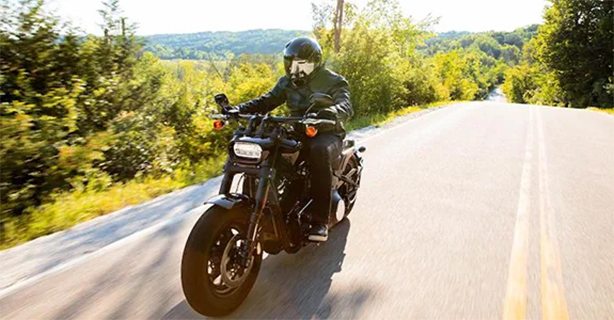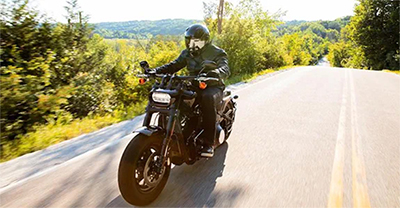Every safe ride starts with awareness, and that awareness begins with what you choose to see. The S.E.E. system is more than a riding technique; it's a strategy for staying ahead of trouble before it finds you.
Have you learned to predict the future?
Not tomorrow—but the next few seconds.
As a motorcyclist, anticipating small events before they unfold can dramatically affect your safety. Expect the unexpected. The good news is that you can train for this.
The Motorcycle Safety Foundation® (MSF)—a national nonprofit focused on rider education—teaches a strategy called S.E.E.: Search, Evaluate, Execute.
It helps riders read the road ahead, assess risk, and respond decisively.
SEARCH: HOW TO LOOK 12 SECONDS AHEAD
Where do your eyes go when you ride?
Scanning isn’t just about looking far ahead. It’s about using your entire field of vision. This means looking near, far, left, right, and using your peripheral vision to stay continuously aware of your surroundings.
And remember: the faster you ride, the farther that 12-second window stretches. At highway speeds, you’re covering hundreds of feet in just a few seconds, so the distance you scan needs to increase accordingly.
Do they linger on the clouds, the trees, the wildlife? It’s natural to notice these things. After all, enjoying the scenery is part of why we ride. But the key is not to linger. The S.E.E. method encourages scanning as far ahead as 12 seconds. Don’t get bogged down by counting seconds. Just look as far ahead as is practical.
On a wide-open rural road, your eyes may reach far ahead. In dense city traffic, your gaze needs to be closer. The goal is to gather information constantly.
Notice a swerving car up the road.
A school zone sign.
A vehicle gaining in your mirror.
Is a car preparing to turn at an upcoming junction?
And remember: not everything you need to see is ahead. Check your mirrors frequently, use shoulder checks, and adjust your lane position for visibility.
EVALUATE: WHAT COUNTS AS A THREAT?
As you search, you’re also evaluating – which is taking in all the information that may influence how you may react in each scenario. This includes other road users, surface conditions, traffic controls and roadway design features, and escape paths. Every clue, like a school zone, a drifting car, a distracted driver, can indicate future risk.
That swerving car? It might be someone texting, tired, or impaired. You don’t need to know why. Just recognize the potential for danger.
The school zone sign? Ask yourself: is it a school day? Are kids present? Even off-hours, playgrounds attract activity. Look for parked vehicles that could obscure children.
A turning vehicle? Can you see the driver’s eyes? Do they see you? Can you make eye contact? What’s the status of the pedestrian signal?
Even the squirrel is a clue. Is it about to run into the road? If it were a deer instead, would your reaction change?
Threats aren’t always obvious. Complacency is especially dangerous on familiar roads. Stay sharp by scanning actively, checking mirrors often, and mentally rehearsing your next move. Think ahead about your options, stay flexible, and continuously play out the ‘what ifs’ so you’re ready for anything.
EXECUTE: DON’T JUST REACT, PLAN AHEAD
Once you’ve evaluated, act. Here’s how:
Swerving vehicle: Stay clear. Increase following distance or look for a safe opportunity to pass. In traffic, cover the clutch and both brakes.
School zone: Lower speed per posted rules. Scan sidewalks and crossings actively.
Small animal: Maintain course. Swerving can cause loss of control. Avoid abrupt moves.
Deer: Slow down and prepare to stop. Where there’s one, more often follow.
Turning driver: Eye contact is ideal, but not guaranteed. If uncertain, slow down. Assume you’re not seen, especially if riding solo.
Keep an escape route in mind. Are you boxed in? Is there a shoulder? Always consider speed, traction and braking distance.
EXPERIENCE: FAMILIAR ROADS ARE NO EXCUSE
Experience is a powerful teacher. Every ride is a chance to learn something new. With time, you’ll notice patterns and anticipate threats sooner. But be careful. Familiarity can breed complacency.
Many unplanned incidents happen close to home. Riders often let their guard down where they feel safe. The sharpest instincts often emerge in new environments. Aim to apply that same awareness, even on your commute.
3 PRO TIPS TO S.E.E. LIKE A PRO
Look 12 seconds ahead - near and far and side to side - and scan mirrors and periphery. Awareness is 360°.
Evaluate risks constantly. Every clue tells a story.
Be ready to act. Cover controls, choose good lane positions, and plan escapes.
Some riders ask: "Do I really have to do this all the time?" No—but you also don’t have to ride as safely as possible. Every ride is a choice about how much risk you’ll accept.
S.E.E. isn’t about obsessing over what might happen. It’s about staying alert to the possibilities and making smarter, earlier decisions.
The future is always just ahead. You may not see it, but with practice, you’ll learn to anticipate it.
Bonus Tip:
Common S.E.E. Mistakes to Avoid:
Fixating on one threat for too long
Riding on autopilot on familiar roads
Forgetting to monitor rear and sides
FINAL THOUGHTS: ANTICIPATION IS A SKILL YOU BUILD
The more you practice the S.E.E. method, the more second nature it becomes. You’ll start to recognize patterns before they fully emerge, gaining a kind of rider intuition. That’s not magic—it’s awareness, experience, and preparation working together.
Anticipation is more than a safety tactic—it’s a mindset. One that helps you ride longer, smarter, and with greater confidence. So, the next time you start your engine, commit to more than the ride. Commit to seeing what others miss.
Because in motorcycling, foresight isn’t just helpful—it’s essential.
READY TO PUT S.E.E. INTO ACTION?
Practicing the S.E.E. system can help you avoid unplanned incidents—something that may even benefit your motorcycle insurance record over time. Fewer claims could mean better premiums, and safer riding speaks volumes about your risk profile.
Want to see if your habits on the road could help you save?
Contact one of our motorcycle insurance agents today and find out how your proactive approach to safety may qualify you for a better rate. Or start a free, online quote. It’s quick, easy, and geared for riders just like you.
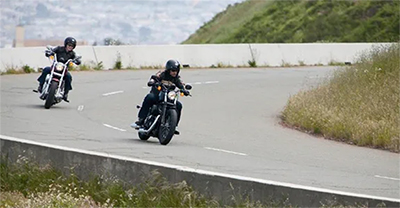
Cornering confidence will determine if a sign indicating ‘bends ahead’ results in a whoop of joy, or feelings of dread. Here’s how to advance beyond the cornering basics.
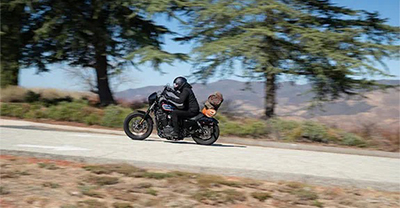
Motorcyclists relish feeling the wind in their faces. But wind can also have a treacherous side. These tips can help you anticipate and adequately react to windy conditions.
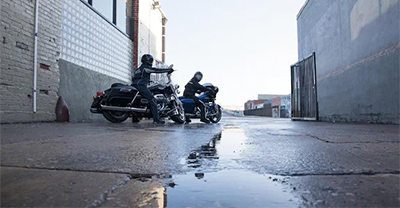
Being on the road when the weather turns wet is all about understanding the needed adjustments. These six wet weather tips will keep the fun going. Learn more!
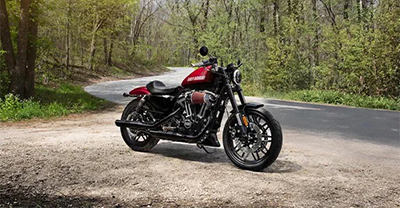
By learning these simple techniques, you can sail through rough spots on your motorcycle with confidence and get where you’re going without incident.

